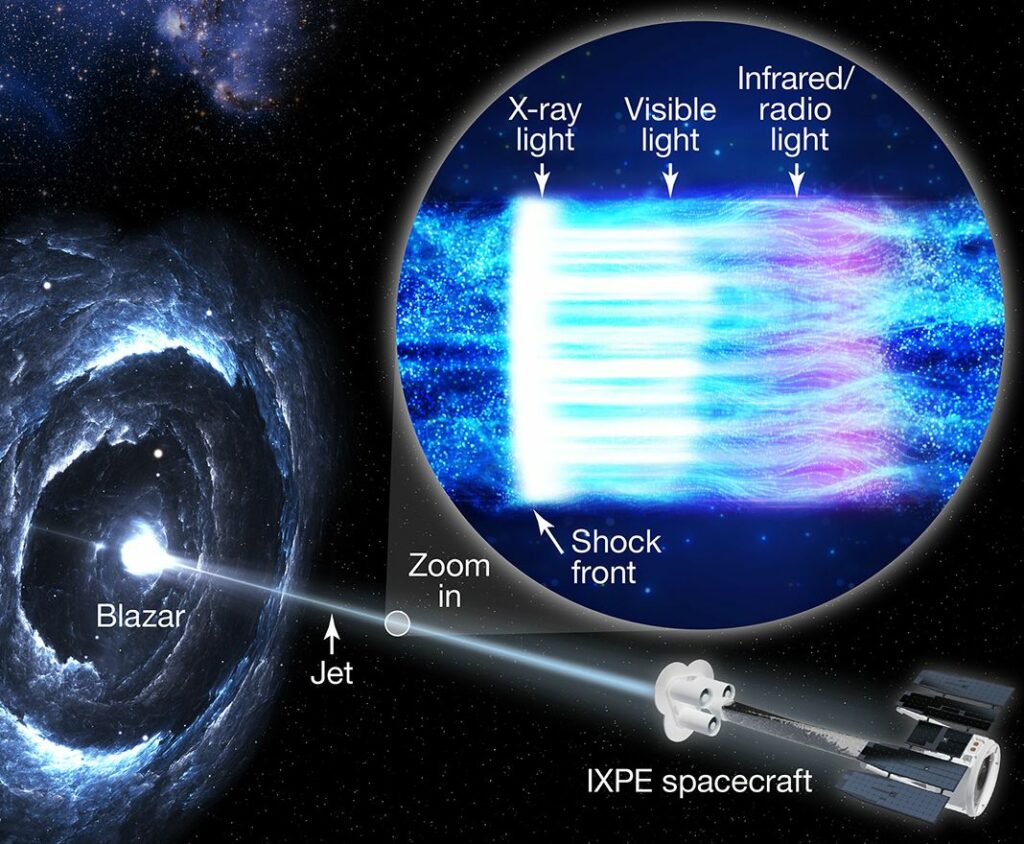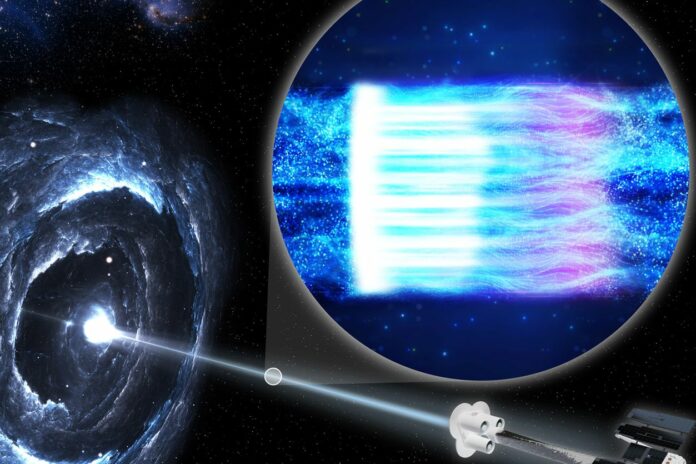By observing blazar galaxies, which are fueled by supermassive black holes and fire tremendous jets of ionized particles at the earth, an international team of astronomers think they have figured out how these blazers produce light.
The team was able to examine X-rays coming from the Markarian 501 blazar using the Imaging X-ray Polarimetry Explorer (IXPE), and they now believe that the blazar’s magnetic “shock wave” is supercharging the particles and speeding them to the point where they release X-rays.
Turbulence causes these particles to emit lower-energy light as they move farther from the shock wave’s origin, first visible light, then infrared light, and finally radio waves.
This week’s publication of observations of dazzling jets of particles from galaxies driven by supermassive black holes in Nature sheds light on the mechanisms underlying such events.
The results may help us learn more about how black holes release high-energy particles.
Blazars are a type of galaxy that sends powerful jets of charged matter in the direction of Earth.
High-energy particles are the main source of light from blazars.

It is still unclear how these particles are propelled to such high energy. X-ray measurements of the jets could help answer this question, but an instrument that could make these kinds of measurements has only just become available.
The Imaging X-ray Polarimetry Explorer (IXPE), which was launched in December 2021, has assessed the X-ray polarization of Markarian 501, a highly brilliant blazar (Mrk 501).
Ioannis Liodakis and colleagues identify two X-ray polarimetry measurements of Mrk 501 made in March 2022 by IXPE.
By comparing these metrics with radio and optical polarimetric data, the authors think that the initial acceleration of particles in the jets from this blazar was triggered by a shock wave that spread out along the jet.
These findings show that supermassive black hole systems can be probed with a variety of polarization measurements.
These findings, according to Lea Marcotulli, mark a turning point in our knowledge of blazars.
“X-ray polarimetry will now enable us to study several of these jets to understand if these shocks are common to all sources,” they said.
The findings were published in Nature.
